|
Often construction projects work excessively long shifts, or work weekends and public holidays. These longer hours are normally paid at overtime rates which could be anywhere from 50% to double the normal rate. Obviously the workers aren’t double, or even 50%, more productive during this time. In fact the opposite is normally the case, and as fatigue sets in the productivity declines. In addition, some of the supervision and management may be absent during this time which can result in workers being poorly managed and supervised. labour productivity on construction sites Sometimes when overtime isn’t controlled, personnel will work on a weekend when they earn the overtime or penalty rates, and then take a day off in the week which would have been paid at normal rates. Workers may be poorly controlled on weekends and they arrive on the project intoxicated, or they don’t work the hours they claim they have worked. Another problem when work is carried out afterhours is that key personnel may be absent; for instance, if the crane operator decides not to work then other workers may be unable to do their work. #constructionmanagement #constructionindustry #constructionmanagementtips Rules for working overtime in constructionIt’s therefore important when overtime is necessary that: 1. only work that has to be done after hours is performed 2. only those that are required for these tasks are allowed to work 3. the hours are carefully logged and monitored 4. there is adequate supervision present 5. the work areas and equipment are accessible 6. key personnel are present 7. the hours of individuals are monitored to ensure they don’t exceed the legislated hours, or the prescribed hours for the project 8. workers are monitored to ensure they don’t become fatigued 9. workers are paid correctly and in accordance with the prescribed overtime rates 10. all arrangements are in place for transport and access to the site 11. the client is aware work will be done after-hours 12. the project isn’t breaking any codes or regulations regarding noise restrictions or similar Another 10 ways to improve productivity  (From the book 'Building a Successful Construction Company: The Practical Guide' by Paul Netscher) "I have what I consider some of the best books on construction management. Thanks for sharing what you have learned." (Reader 1 - Amazon.com) Do you want to learn how to manage construction projects successfullyPaul Netscher has written several easy to read books for owners, contractors, construction managers, construction supervisors and foremen. They cover all aspects of construction management and are filled with tips and insights.
Visit to read more. The books are available in paper and ebook from most online stores including Amazon.
1 Comment
Unfortunately many construction projects run late due to circumstances caused by the client or their agents. Some reasons for these delays were discussed in a previous post. Can I Claim for Additional Time on My Construction Project? Pricing the full cost of delays can be difficult and often the full impacts are only understood by the contractor after their delay claim has been submitted and accepted by the client. Below are some items to consider when compiling your next construction delay claim. #constructionclaims #constructiondelays #constructionvariations "There are often many unexpected consequences of construction project delays" Impacts of delays on construction projectsThe delay could result in: 1. the contract schedule being extended, meaning that the contractor remains on site longer than allowed for and incurs additional costs for: a. their construction site facilities b. management and supervisory staff salaries and their associated costs c. the extension of the bonds, sureties and insurances d. equipment such as cranes 2. the inefficient and unproductive use of personnel and equipment which: a. cannot be used at all while they are waiting for access or information b. are only partly utilised since they may only have limited access to work areas 3. the work moving into a season with unfavourable weather conditions (wind, extreme cold, heavy rain), which wasn’t allowed for in the schedule or tender, causing further delays and inefficiencies Prevent poor weather from disrupting your construction project 4. material prices increasing in the interim 5. the activity happening when other contractors are working in the area which then adversely impacts productively 6. an activity being undertaken out of sequence which may result in: a. access being limited due to other work around it being completed b. the work area becoming congested due to other activities happening simultaneously c. specialist equipment, subcontractors or personnel not having continuity of work resulting in them having to return to site at a later date entailing additional mobilisation costs (in some cases the equipment or subcontractors may not be available when they are required again, which could result in further delays) d. damage to works already completed 7. materials which have been ordered having to be stored because the site isn’t ready to use them, resulting in storage costs and double handling, and the associated risks of damage and theft 8. disruption of cash flow because the project’s end date is extended, deferring the release of retentions and securities Negative cash flow – the death for many construction companies 9. subcontractors are delayed resulting in them claiming delay costs An introduction to construction variation claims for construction project managers video 13 - Claims by Subcontractors against Contractors Furthermore, staff and equipment are unable to move to the next profitable construction project – meaning the company probably loses potential profits, or that project starts late or is under-resourced causing problems on that project. Calculating delay claimsMany of these costs are difficult to demonstrate and prove to the client. Frequently, clients don’t understand the consequences of their actions. Construction companies should do whatever they can to ensure the client delivers access and information in accordance with the schedule requirements so the project isn’t delayed. There are seldom winners when construction projects are delayed. Of course in some cases the contractor is responsible for the delays. They not only then face paying client enforced damages or penalties, but they also incur all their own costs associated with the delay. #constructionmanagement #constructionmanagementtips #contractors 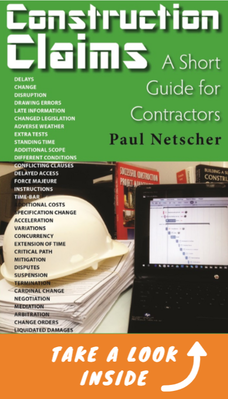 The information in this article is from Paul Netscher's book 'Construction Claims: A Short Guide for Contractors'. Available from Amazon and other online stores. © 2022 This article is not to be reproduced for commercial purposes without written permission from the author. "An excellent, concise and very practical guide to successful claims process. Highly recommended." (Reader Amazon UK) Do you want to learn how to manage construction projects successfullyPaul Netscher has written several easy to read books for owners, contractors, construction managers, construction supervisors and foremen. They cover all aspects of construction management and are filled with tips and insights.
Visit to read more. The books are available in paper and ebook from most online stores including Amazon. Construction companies sometimes make mistakes or produce work of an inferior quality on their projects. This work has to be rectified which costs money and time. However, in many cases this work isn't done properly which then increases the original cost. How important is quality on your project I’ve often seen construction repairs and rectification work done hurriedly, sometimes even in secret – after-hours. This is obviously unacceptable and results in additional costs. Don't end up with unhappy clients. #constructionquality #constructiondefects #constructionmanagement Repairing construction defects1. Repairs must be done correctly so that the structural integrity of the structure isn’t impacted and in such a way that it’s aesthetically acceptable. Poorly executed construction repairs have to be redone, either during the construction period or, sometimes, long after the project has been completed. 2. Usually the repair process must be approved and witnessed by the client’s representative and they’ll often insist the work is redone if they haven’t approved the method. "repairing a defect badly often results in additional costs when the problem must be repaired properly later" Fixing construction defects correctlyThere are often different ways of fixing a problem and the contractor must select one taking into account: 1. the aesthetics of the repair (it’s often cheaper to do a patch job, which may however look terrible and be a constant reminder to the client of the contractor’s mistake) 2. the cost of the repair, although cheapest isn’t always best 3. the durability of the repair (you don’t want to have to return to fix the problem again) 4. delays the repairs cause the construction project 5. disruptions to the client’s activities 6. the client’s acceptance of the repair method 7. the structure’s integrity Not repairing defects properly causes problems later Sometimes the best solution is to demolish the structure completely and rebuild it correctly. The true costs of poor quality construction #constructionprojectmanagement #constructionprofessionals  (An extract from the book; 'Building a Successful Construction Company: The Practical Guide' by Paul Netscher) © 2022 This article is not to be reproduced for commercial purposes without written permission from the author. "Great book" (Reader Amazon UK) Do you want to learn how to manage construction projects successfullyPaul Netscher has written several easy to read books for owners, contractors, construction managers, construction supervisors and foremen. They cover all aspects of construction management and are filled with tips and insights. Visit to read more. The books are available in paper and ebook from most online stores including Amazon. "Why would contractors do work which they aren't paid?" This sounds a strange question! Which construction contractor works for free? Yet it’s something that happens often on construction projects. Contractors regularly unwittingly carry out work for which they aren’t paid. I’m not talking about dishonest clients who don’t pay their contractors, which is another story all together, rather, it’s because contractors haven’t claimed for the work they’ve done. Reasons why contractors do not claim money due to themSome reasons for this are: 1. the construction project manager isn’t familiar with the project scope of works and what was priced in their tender 2. the project manager hasn’t read the contract document or doesn't understand it 3. the project manager isn’t taking note of the work being carried out or when and what the client has provided 4. the contractor’s person preparing the invoices to the client isn’t familiar with the construction site conditions or the construction work that’s been completed 5. the contractor doesn’t have the required knowledge or training to understand they are entitled to be paid the variation 6. the construction project manager is focused on delivering the project and neglects the financial aspects #constructionclaims #constructioncontracts #constructionlaw "Most construction projects will change and vary from the works that were originally priced. " When contractors can claim a variation and submit a change orderMost construction projects will change and vary from the works that were originally tendered for and priced. Construction contractors must ensure that they are paid for all additional work. Variations occur for a number of reasons including: 1. additional scope – extra work which wasn’t allowed for in the client’s tender document and consequently wasn’t priced by the contractor 2. errors and omissions in the document – resulting in the contractor not pricing or allowing for certain items, restrictions or specifications which they now have to allow for 3. changes to drawings – this may include doing additional work, or having to redo completed work when the changes are issued late 4. delays due to: a. late access being granted to the construction site b. late information or drawings c. the client making changes to the completed works d. unforeseen weather conditions e. unforeseen project conditions f. the client’s contractors or workers impeding or preventing access g. the client-provided services being unavailable, being of insufficient quantity, not provided to the point specified, or provided late h. the client-supplied construction equipment or materials arriving late, in insufficient quantities, or not to the correct quality See also Can I Claim for Additional Time on My Construction Project? and Has Your Project Been Delayed? 5. changes in specifications 6. changes in working conditions such as: a. unexpected ground conditions, for example, rock b. encountering unforeseen hazardous materials on the site c. the discovery of artifacts on the construction site d. the unexpected presence of underground water 7. changes of commercial or contractual conditions 8. the client delaying or changing milestone dates, or requesting the schedule to be accelerated 9. drawing errors and drawing coordination problems 10. changes of law within the state or country (see also When can contractors claim extra costs?) 11. the client or their contractors damaging completed work #constructiondelays #constructionprojectmanagement "It’s important that the contractor regularly compares construction drawings and specifications with what was priced." It’s vital to read through and understand the construction contract (An introduction to construction variation claims for construction project managers video 14 - The Construction Contract Document) and project pricing or tender documents, as well as the related correspondence. It’s important that the contractor regularly compares construction drawings and specifications with those issued when the construction project was priced to ensure that they haven’t changed. #constructionmanagement #constructionchangeorders #contractors Contractors should ask these questionsContinually ask the questions: 1. ‘Are we constructing what we tendered for?’ 2. ‘Are the site conditions as expected at tender stage?’ 3. ‘Has the client fulfilled all their obligations in the contract?’ Some changes are simple for contractors to claimSometimes the variation is as simple as submitting a revised rate or price for an item or task because the description of the item priced at tender stage has changed, for example because: 1. the height or dimensions have changed 2. the quantity has changed 3. the specification is different Get your change order rightThe client must be notified of variations as soon as the contractor becomes aware of them, and certainly within the time specified in the contract. Failure to do so may mean the contractor loses their right to claim. An introduction to construction variation claims for construction project managers Video 4 - Reasons claims are rejected The contractor should ensure that the person preparing the variation has the required knowledge and experience to prepare the claim. If there’s any doubt as to the validity of the claim, or what should be included, seek advice from experts within the company or from outside providers. The cost of getting proper advice is often far outweighed by the revenue that can be earned by an expertly formulated and drafted claim. Pricing the variation correctly is a topic which I will discuss in the future. 15 Rules for construction variation claims and change orders Read also this useful article http://qsadvisor.com/2014/06/additional-works-on-site-the-key-to-getting-every-penny/  (An article adapted from the book ‘Building a Successful Construction Company; The Practical Guide’ by Paul Netscher) Do you want to learn how to manage construction projects successfullyPaul Netscher has written several easy to read books for owners, contractors, construction managers, construction supervisors and foremen. They cover all aspects of construction management and are filled with tips and insights.
Visit to read more. The books are available in paper and ebook from most online stores including Amazon. "Typically construction projects generate piles of waste" At the end of every construction project I’ve been involved with there have been surplus construction materials left over. These are often as a result of: 1. the incorrect quantity of material being ordered 2. duplicate orders being placed 3. material of the wrong specification or size being ordered Do Your Material Deliveries Suck? How to avoid problems 4. the material supplied was of an inferior quality and couldn’t be used "Waste resulting from client changes must be claimed" Of course sometimes the surplus material is a result of the client changing drawings after the material has been procured, in which case the client should be charged for these, and they should be handed over to them. #constructionmanagementtips #contractors Causes of wastage in constructionOther causes of construction wastage are as a result of: 1. Material breakages due to it being damaged during transport, offloading, handling, or using the incorrect installation procedures. Sometimes some of the damage can be avoided by changing the way the material is packaged, handled or transported. For instance if material is palletised by the supplier – which could be at an additional cost – not only can the material be offloaded and handled more easily, thus reducing costs, but there will also be fewer breakages. Handling construction materials 2. Contamination of construction materials which is a particular problem with concrete aggregates, or road building materials, which become contaminated when they’re mixed with other materials, or with the ground they’re dumped on. Sometimes trucks aren’t cleaned properly between products, resulting in the next product being contaminated. Occasionally goods aren’t handled correctly at the supplier and become contaminated there. 3. Products being applied incorrectly because: a. they aren’t prepared or mixed correctly which results in the work having to be redone b. the product may be applied too thickly – for instance concrete slabs may be formed and poured too thickly, paint and epoxy coatings applied too thickly, or joints formed too wide requiring additional sealant material 4. More product is mixed than can be used, resulting in the unused product having to be discarded. 5. Incorrect storage, which may result in materials being damaged by water, dust or heat. planning deliveries to construction sites 6. Keeping construction materials beyond their shelf life which results in the material having to be discarded. 7. Poor housekeeping on a construction project may result in materials being mislaid or damaged by being walked or driven over. 8. Materials are supplied in standard lengths or sizes which usually have to be trimmed to fit where they’re required. Often the offcuts can’t be used elsewhere. Sometimes it's possible to order products in a different length or size which may reduce the amount of offcuts and wastage. 9. Poor quality work has to be redone. 10. Completed work isn't protected and is damaged by follow on trades, or the weather, resulting in it having to be replaced. The true cost of waste in constructionThe additional costs to the construction project are not only the direct cost of the additional construction materials but also includes: 1. offloading, handling and storing them 2. the cost to dispose of the additional, broken or contaminated construction material which includes: a. handling and loading the waste and surplus construction material b. transport to the dump c. dump fees Reducing construction wastage
 This information is from Paul Netscher's book 'Successful Construction Project Management: The Practical Guide' © 2022 This article is not to be reproduced for commercial purposes without written permission from the author. "This book helps with practical tips learned from real experiences. A must read book for the people who are involved in construction projects, especially project managers." (Reader - Amazon.com) Do you want to learn how to manage construction projects successfullyPaul Netscher has written several easy to read books for owners, contractors, construction managers, construction supervisors and foremen. They cover all aspects of construction management and are filled with tips and insights.
Visit to read more. The books are available in paper and ebook from most online stores including Amazon. "Errors occur when the wrong construction drawings are used" Often errors occur on projects because project staff construct structures using the wrong drawings or drawings which have been superseded. In addition some drawings are issued late which may cause the work to be delayed, or maybe the drawings have been issued to the contractor but because they have been mislaid or miss filed the contractor can't start the work on time or order the required materials. It's therefore important that every construction project has an orderly filing system to receive and issue drawings. #constructiondrawings #constructionmanagement #constructionprojects Managing construction drawings1. Drawings should be stamped with their date of receipt. 2. New drawings must be entered into the drawing register which should: a. include the drawing title, drawing and revision number, and the date the drawing was received b. be compared with the client’s drawing register and discrepancies reported to the client c. be maintained even if the client has their own register,since the client’s register normally logs the date when drawings left their office, but the contractor may not receive them until several days later 3. Drawings must be distributed to the relevant person. 4. Drawings issued to subcontractors, suppliers and even staff should be signed for so there is proof of receipt.(On more than one occasion I’ve had a subcontractor order materials in accordance with an earlier drawing revision and then claim they were never issued the revised drawing). The drawing issue slips should: a. include the drawing number, title and revision b. have the date of receipt c. have the signature of the recipient d. be filed 5. A master copy of all drawings must be kept in the project site office. These drawings should: a. be filed correctly according to drawing number, and if necessary, in their various sections b. never be removed from the master file unless they are replaced by a revision that supersedes them c. not be removed from the site office d. not be defaced or written on e. be kept up-to-date and superseded drawings should be marked ‘superseded’ and removed f. be available on drawing tables where they can be easily referred to 6. A master set of all the superseded drawings should be kept in the site office so that drawing changes can be tracked, if necessary. 7. The Project Manager must: a. be aware of recently issued drawings and acquaint themselves with their content b. be aware of what drawings and information are outstanding c. ensure drawings are issued to the correct people d. ensure Supervisors are using the correct revision 8. Supervisors should: a. have access to a clean, dry table to work off their drawings b. maintain their drawings in a file so they are not mislaid c. remove and clearly mark superseded drawings d. ensure they are working off the latest drawings e. report any problems or discrepancies with drawings #constructionprojectmanagement Good drawing control will eliminate construction errors  (from 'Successful Construction Project Management - The Practical Guide' by Paul Netscher) © 2022 This article is not to be reproduced for commercial purposes without written permission from the author. "Many construction companies lose money because their Project Managers or Construction Managers have failed to understand the contract" Many construction companies lose money because their Project Managers or Construction Managers have failed to understand the contract or have not acted in accordance with the contract. #constructioncontracts #constructionmanagement #constructionlaw Why construction managers must understand the project contractNot understanding the construction project contract document could lead to the following amongst others: 1. not submitting project valuations on time, or with the correct supporting documentation Negative cash flow – the death for many construction companies 2. not ensuring the contractor is paid on time The CONSTRUCTION project MANAGER'S financial duties 3. carrying out work outside the project scope 4. not ensuring the client meets their contractual obligations 5. failing to submit claims and variations timeously Should construction project managers take the lead with variation claims? 6. not following the correct insurance claim procedures Don’t Screw Up Your Construction Insurance Claim! 7. failing to meet the project milestones Will your construction project be completed on schedule? Read this It’s therefore important the Project Manager carefully reads the contract, noting important items and asking for advice when they are unsure of anything. #constructionmanagementtips #constructionprojectmanagement Don’t start construction projects without a proper contract  (This is an extract from 'Building a Successful Construction Company - The Practical Guide' by Paul Netscher) © 2022 This article is not to be reproduced for commercial purposes without written permission from the author. "Simple language provides understanding for construction business beginners. Case studies from real life and methodologies will be interesting for professionals." (Reader on Amazon) Do you want to learn how to manage construction projects successfullyPaul Netscher has written several easy to read books for owners, contractors, construction managers, construction supervisors and foremen. They cover all aspects of construction management and are filled with tips and insights.
Visit to read more. The books are available in paper and ebook from most online stores including Amazon. What will 2015 bring for you? We all wish and hope for a successful and prosperous project but are often disappointed when things don’t turn out as we hoped for. How can you influence events so your project is more successful?
Below are a few simple suggestions for project managers/site managers which will add immeasurably to the project’s success without requiring much extra effort. 1. Safety – we not only have a responsibility to ensure our workers return home uninjured at the end of the day but accidents also cost time and money. Some simple actions include: 1.1. Lead by example – obey the safety rules on site and wear the appropriate personal protective equipment. 1.2. Never pass an unsafe act by without correcting it and explaining to those responsible why it was unsafe. 1.3. Ensure project inductions are appropriate and address the project risks. 2. Quality – poor quality costs time and money to rectify and negatively impacts both you and your company’s reputation. Therefore: 2.1. Don’t accept poor quality and as you walk the site look with a keen eye to ensure work is done correctly. 2.2. Ensure the project team understands the quality requirements and also that poor quality work won’t be tolerated. 2.3. Check that completed work isn’t damaged by follow on work. 3. Subcontractors – on some projects subcontractors play an important role. 3.1. Pay them on time and treat them fairly. They’ll be more likely to give your project the importance it deserves. 3.2. Put instructions in writing addressed to the responsible person. Many errors and disputes arise because of miscommunication or misunderstandings. 3.3. Let them know immediately when you notice their quality isn’t to the required standard, they are falling behind schedule or they aren’t working safely. 4. Develop your team – the stronger your team the stronger you will be. 4.1. Provide feedback – both positive and negative. 4.2. Use their strengths and support their weaknesses. 4.3. Send them on appropriate training courses. 5. Look for opportunities for further work – project managers are usually well positioned to market the company and to find new leads for further work for the company. 5.1. The best advertisement for any company is to deliver a quality project on time with the least inconvenience to the client, neighbours and the public. 5.2. Talk to the client, the client’s team (their engineers, project managers and architects), subcontractors and the local planning authorities to find out what new projects they are working on and how your company can get involved. Pass these leads onto people within your company who can follow them up. 5.3. Always have sufficient business cards and company brochures available to give out to prospective clients. 6. Develop yourself. 6.1. Always look out for new and better ways of doing things. 6.2. Attend courses – especially those aimed at the softer skills. Some suggestions include the art of negotiation, being a better delegator and time management. 7. Manage your time more effectively. 7.1. Learn to delegate. 7.2. Carry a notebook (paper or electronic) to make notes of tasks and questions that come up in the course of the day. 7.3. Don’t be distracted by incoming emails – read them only when you have time to deal with them. 7.4. Ensure both you and the project has an ordered filing system. Time is wasted searching for mislaid documents. 8. Spend quality time with your family. 8.1. Unfortunately sometimes working late is unavoidable but don’t let it become a habit. 8.2. Take time off to attend important family events like school functions and sporting events. 8.3. Don’t let work phone calls or emails interrupt family time – especially meal times. 8.4. Take vacations or have a weekend away during the year. You aren’t indispensable and the time away from work helps you recharge for the challenges ahead. 9. Look at ways to improve productivity on the project. Even small improvements can yield a big difference to the bottom line. 9.1 In your travels around the construction site check that people and equipment are being utilised efficiently. 9.2. Always ask if there’s a better solution or way of doing a task. Don’t accept the first method that springs to mind. 10. Ensure the company is paid for completed work. The project manager should: 10.1. Ensure all work is claimed in valuations and that they are submitted in accordance with the contract. 10.2. Follow up to ensure the client pays the invoice. (For more great practical advice read 'Successful Construction Project Management - The Practical Guide' and 'Building a Successful Construction Company - The Practical Guide' by Paul Netscher) Many people make New Year’s resolutions, yet, few manage to keep them. These resolutions seem a good idea on 31 December, are less appealing on 1 January and distant memories a month later.
Why is this? Would project management skills help? Many resolutions are ‘spur of the moment’ decisions with little thought. Some are made as an excuse not to have done something earlier in the year. People put off starting a diet or exercise plan by saying that they’ll start it in the New Year. If you couldn't exercise in October how will January be any better and if you were unable to spend time with your family last year what makes you think this year will be better? Many resolutions don’t have finite goals. How much weight do you aim to loose. Most don’t have milestones so there’s often no way of measuring progress. Some resolutions don’t actually address the problem. You may want to spend more time with the family so you resolve to come home half an hour earlier. However, the problem usually isn’t the amount of time spent at home but rather the quality of time. It’s pointless being at home if you take business calls during dinner and are continually responding to emails. Rather, it would be better to ensure that you say attend one ball game a month with your son, make sure you are there for family special events and pay attention to what’s going on at home. Most resolutions don’t have a correct methodology thought through. It’s all very well saying you intend to spend more time with the family, but how will this be accomplished? Obviously something has to change. Just saying you will leave work half an hour earlier won’t be possible if you don’t change the underlying cause of having to work excessively long hours. This may be a failure to delegate properly, taking on too many projects, not having the right support staff or simply being disorganised. The same probably goes for resolving to do more exercise. Why haven’t you being exercising – possibly because you didn’t have the time? So what are your New Year’s resolutions? Will you keep them? Do you have a plan in place or is it just some idea that sounds good? If you resolution is to become a better construction project manager, or, to grow your construction company then consider reading my books ‘Successful Construction Project Management: The Practical Guide’ and ‘Building a Successful Construction Company: The Practical Guide |
Archives
June 2024
Note: We welcome genuine comments, especially comments that add additional information to the subject matter in the article. We however reserve the right to remove inappropriate comments, which includes comments that have nothing to do with the subject, comments that include inappropriate language, and comments that are an advertisement for a product or company, or which include an advertising link. Comments must be in English. We will not enter into discussion on why a particular comment was removed.
CategoriesCopyright 2016 - The attached articles cannot be reproduced for commercial purposes without the consent of the author.
The opinions expressed in the attached articles are those of the writer. It should be noted that projects are varied and different laws and restrictions apply which depend on the location of the contractor and the project. It's important that the reader uses the supplied information taking cognisance of their particular circumstances. The writer assumes no responsibility or liability for any loss of any kind arising from the reader using the information or advice contained herein. "I have what I consider some of the best books on construction management."
Books are available from: Amazon.com Amazon.co.uk takealot.com kalahari.com Amazon.in Amazon.de Amazon.fr Amazon.it Amazon.com.au Powell's Fishpond uread bokus Amazon.ca Amazon.es Other retail stores Available in paperback or on Kindle "28 YEARS OF CONSTRUCTION PROJECT MANAGEMENT EXPERIENCE, DEVELOPING SUCCESSFUL CONSTRUCTION PROJECT MANAGERS AND BUILDING SUCCESSFUL CONSTRUCTION COMPANIES"
|

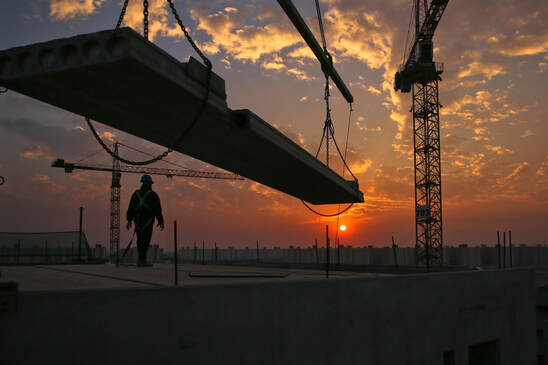
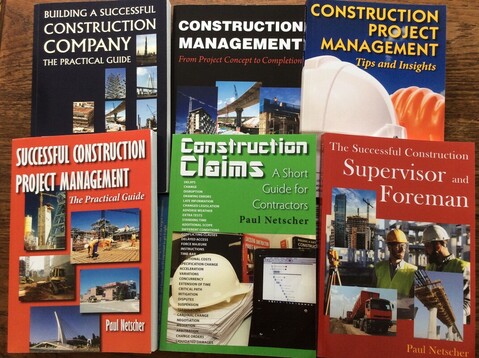

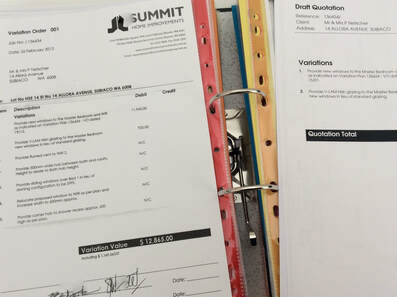
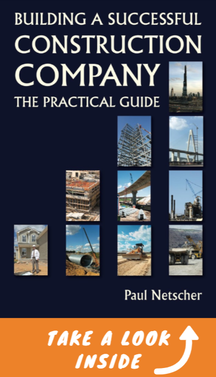


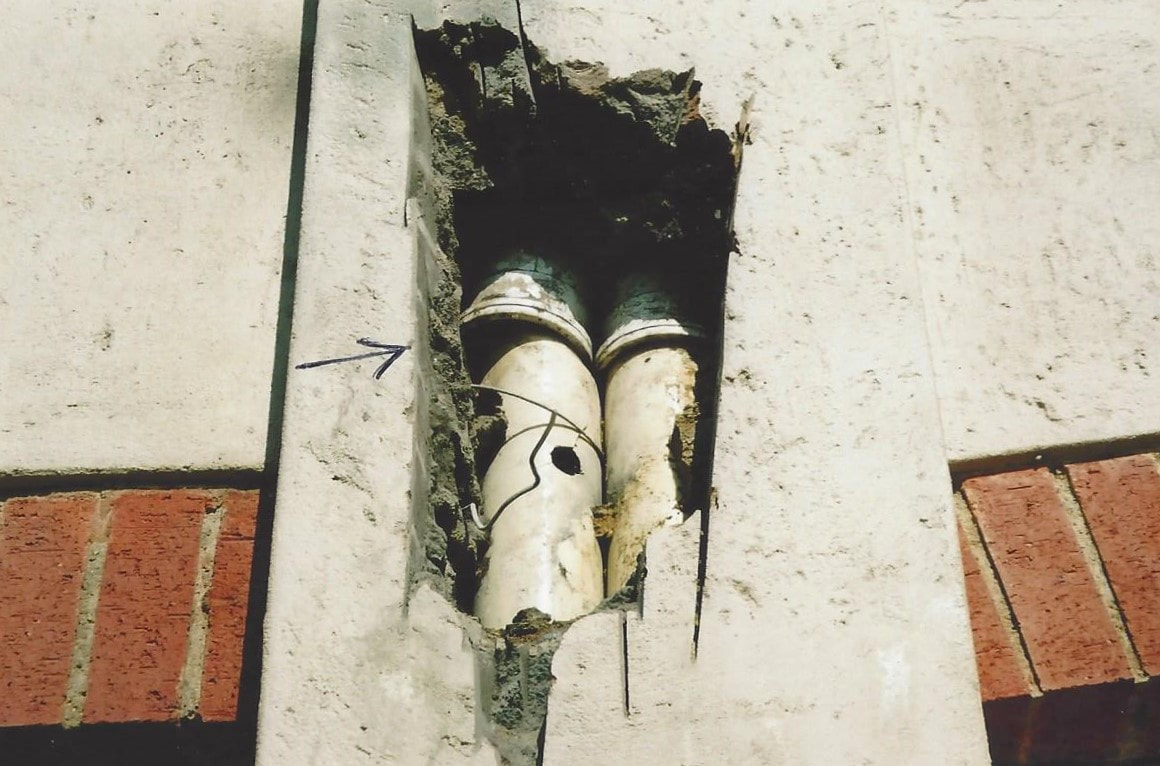


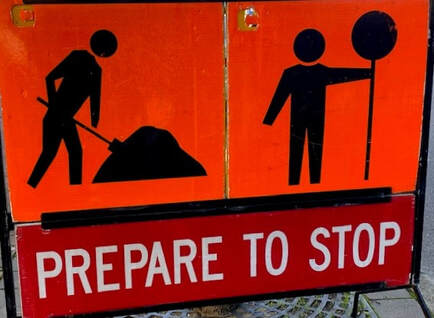
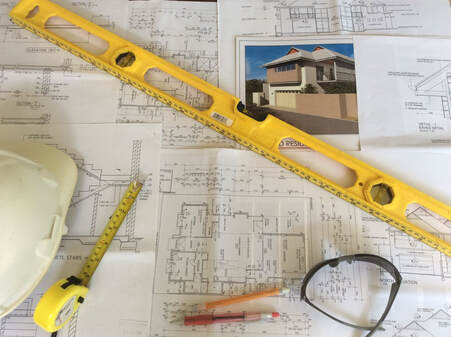
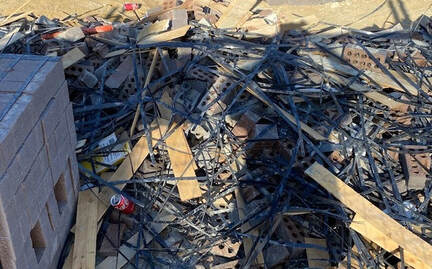

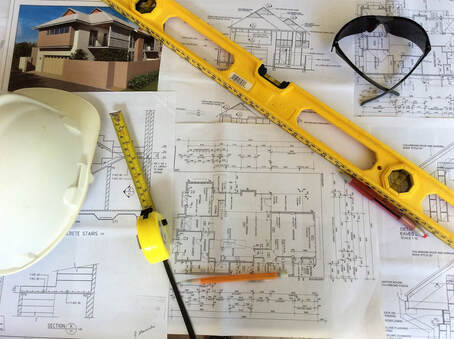
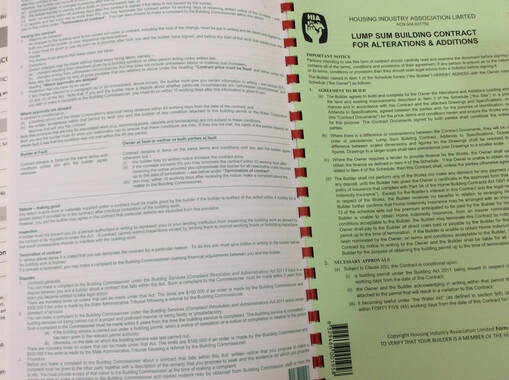



 RSS Feed
RSS Feed




